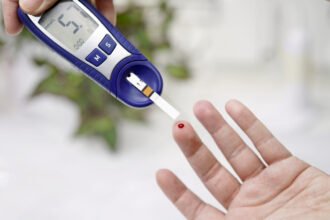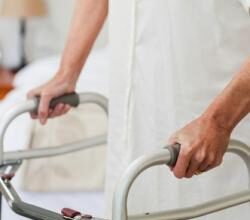 “How Sweet It Is (To Be Loved by You)” was a mid-60s Motown sound hit. First recorded by Marvin Gaye in 1965, and later by James Taylor, it became one of Gayes’ most successful songs.
“How Sweet It Is (To Be Loved by You)” was a mid-60s Motown sound hit. First recorded by Marvin Gaye in 1965, and later by James Taylor, it became one of Gayes’ most successful songs.
 “How Sweet It Is (To Be Loved by You)” was a mid-60s Motown sound hit. First recorded by Marvin Gaye in 1965, and later by James Taylor, it became one of Gayes’ most successful songs.
“How Sweet It Is (To Be Loved by You)” was a mid-60s Motown sound hit. First recorded by Marvin Gaye in 1965, and later by James Taylor, it became one of Gayes’ most successful songs.
It now seems that a mashup of smartphone apps and glucometer medical devices is a sweet solution for diabetes self-management and better patient satisfaction and compliance.
What is a mobile glucometer app?
A smart phone (Android or iPhone) and a mobile glucometer combine ease of use, accessibility and ability to share data with other people and with physicians. Combining a glucometer with a smart phone is a great application for consumer medical devices that help people self-manage their condition on a day-to-day basis.
Mobile healthcare apps is a red-host market these days but the notion using a mobile phone for glucose control in Type 2 patients with diabetes is not a new idea.
Cho, Lee and Kwon from the Division of Endocrinology and Metabolism, Department of Internal Medicine, Catholic University of Korea reported in J Telemed Telecare in 2009 (see the abstract on Pubmed – that there are significant advantages to mobile glucometer apps:
A mobile phone with a glucometer integrated into the battery pack (the ‘Diabetes Phone’) was launched in Korea in 2003. We compared its effect on management of type 2 diabetes to the Internet-based glucose monitoring system (IBGMS), which had been studied previously. We conducted a randomized trial involving 69 patients for three months. Participants were assigned to an Internet group or a phone group. The phone group communicated with medical staff through the mobile phone only. Their glucose-monitoring data were automatically transferred to individual, web-based charts and they received medical recommendations by short message service. The Internet group used the IBGMS. There were no significant differences between the groups at baseline. After three months’ intervention, HbA(1c) levels of both groups had decreased significantly, from 7.6% to 6.9% for the Internet group and from 8.3% to 7.1% for the phone group (P < 0.01). Levels of patient satisfaction and adherence to medical advice were similar. Mobile, bidirectional communication between doctors and patients using the diabetes phone was as effective for glucose control as the previously-studied Internet-based monitoring system and it was good for patient satisfaction and adherence.
Fast forward 3 years – there are now 3 consumer apps for mobile glucometer
Telcare
What they say: The world’s first cellular-enabled Blood Glucose Meter. Telcare uses smartphone Appsfor iPhone & Android to to create a network of support for parents & peers.
How it works: Telcare BGM is a 3G-enabled blood glucose meter that wirelessly transmits glucose values using T-Mobile USA’s wireless network to an online clinical server. Clinicians can then view the data if that server connects up to their electronic medical records system. The data is also pulled into a smartphone app that can be accessed by the user or by caregivers. Telcare provides the example of parents of diabetes children, or adult children of older patients.
What makes it special: Direct 3G transmission of test results to online data service.
MyGlucoHealth
What they say – The MyGlucoHealth Wireless Meter from Entra Health Systems is the world’s first integrated Bluetooth-enabled blood glucose meter. With rapid testing results available in 3 seconds, smallest blood sample size (0.3µL) and automatic coding of test strips, the MyGlucoHealth meter is the most technically advanced diabetic patient care product on the market today.
How it works: The MyGlucoHealth (http://www.myglucohealth.net/) glucometer uses Bluetooth to transmit data to a smartphone for transmission to their online data collection network to report patient blood glucose readings. Using the MyGlucoHealth Portal at www.myglucohealth.net, patients can digitally transmit and evaluate their daily readings using their mobile phone, while communicating those same results automatically to their physician. This allows the physician to stay up-to-date on all of his or her patients and intercede immediately if needed.
What makes it special: Test results available in 3 seconds, small blood sample size (0.3µL) and automatic coding of test strips.
AgaMatrix iBGStar iPhone glucose meter.
What they say: Released in Dec 2011 after receiving FDA 510(K) clearance and marketed by no less than the pharma giant Sanofi-Aventis, “iBGStar is the first available blood glucose meter that seamlessly connects to the iPhone and iPod touch allowing you to view and analyse accurate, reliable information in ‘real time. The device was designed and developed by the German company, Wavesense
How it works: iPhone app and glucometer that attaches to the Apple iPhone 30 pin connector.
What makes it special: Glucose measurement and data transmission in 1 package.
Glooko
What they say: Glooko makes it easy for customers with diabetes to monitor their blood sugar on the go. The company’s MeterSync cable lets users share data between self-monitoring blood glucose meters and a free iPhone app Glooko logbook.
How it works: Uses an iPhone app and a glucometer that connects to the iPphone 30 pin connector.
What makes it special: Not sure – it seems like exactly the same play as the Entra Health Systems product iBGStar.








